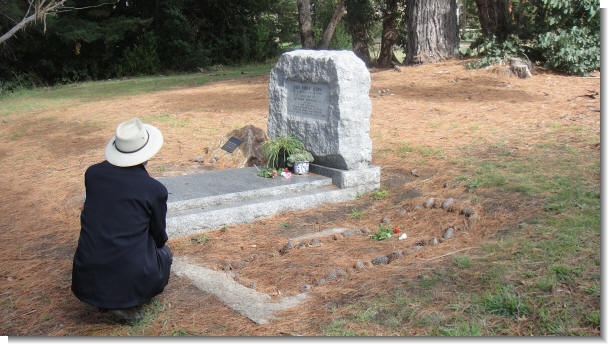Sir John Holland AC
military officer, engineer
21st June 1914 - 31st May 2009
The following short article was first published in the
White Hat Melbourne Newsletter No.316 of 3rd June 2009
Vale Sir John
A young engineer named John went off to WW1, rose to the rank of General,
was knighted on the battlefield, came back to Australia and oversaw major
engineering and infrastructure projects. His face appears on the $100 note.
Two generations later, a young engineer named John (even though his real
name was Clifton) went off to WWII, rose to the rank of Lt. Colonel,
returned to Australia and set up a small engineering company, over decades
was involved with major engineering and infrastructure achievements and was,
much to his surprise, presented with a knighthood in 1973.
He had worked for C.O.R. (Commonwealth Oil Refineries) before the war and
went back there on his return. He was determined however to set up an
engineering company that could utilise the talents of the young men he had
served with and who had lost up to six years of their professional working
life. He made a practice of surrounding himself with people who were
�smarter than him�. They may have had higher engineering qualifications but
I think few would argue they were smarter when it came to planning,
administering and managing. Similarly, if specific expertise was not
available in Australia, he made a point of teaming with overseas companies
and learning from them. In the half century since the war he saw Australian
engineering companies rise to being amongst the most successful and
respected in the world.
The first job for his fledgling company was to build a woolshed at
�Nareen� � the property owned by the parents of Malcolm Fraser. Materials
and resources were scarce immediately after the war so this involved quite a
degree of innovation. The growing company became pioneers in Australia in
the use of pre-stressed concrete and projects later involved work on the
Snowy River Project, the cement work for the West Gate Bridge (which had
nothing to do with its collapse), numbers of major projects throughout
Australia through to the management of the construction of New Parliament
House in Canberra. Like many self-made business people he was also a
philanthropist and preferred little or no fanfare for his work in this area.
When Sir John was made an Honorary Fellow of the Australian Academy of
Technological Sciences and Engineering, the President of the Academy
observed that it may never be possible again, for one person, to so shape an
entire profession and an industry in Australia in the way that Sir John has
done in the engineering and construction industry over the past fifty years.
Perhaps nothing better illustrates his place in Australian engineering
than an event which was held by Engineers Australia in the Plaza Ballroom
last year. Part of the proceedings was to be an inaugural award named after
Sir John. He was then 93 and ailing, but was determined to be present. It
was expected that he would briefly hand over the award from his seat, but he
was assisted to his feet because he had �a few words�. He then spoke of the
importance he placed on utilising the skills of those talented people who
came back from the war. Fifty years later the passion was still there.
Although failing health led to occasional lengthy pauses while he regained
his strength, there was absolute silence in the room where the delegates
knew they were in the presence of a man who had done remarkable things for
Australia and their profession.
Sir John died on Tuesday.
We have seen no mention of it in The Age or on the ABC News and
probably few schoolteachers throughout Australia will have mentioned it to
their class. However, the rest of us can do our bit. Next time you drive
home along the South Eastern Freeway (now named after another engineer named
John) or over the West Gate Bridge or over the Tasman Bridge in Hobart or
across the Captain Cook Bridge in Sydney or visit Parliament House in
Canberra or watch a match from the Great Southern Stand or listen to a
concert at the
Sidney Myer
Music Bowl, spare a minute to look around you and remember an important
Australian.

The graves of Sir John Holland (right) and Lady Emily Holland
(left) at Flinders Cemetery
At the time this photograph was
taken (April 2010)
a monument had not yet been erected on Sir
John's grave.
|
___________________
 ___________________
___________________